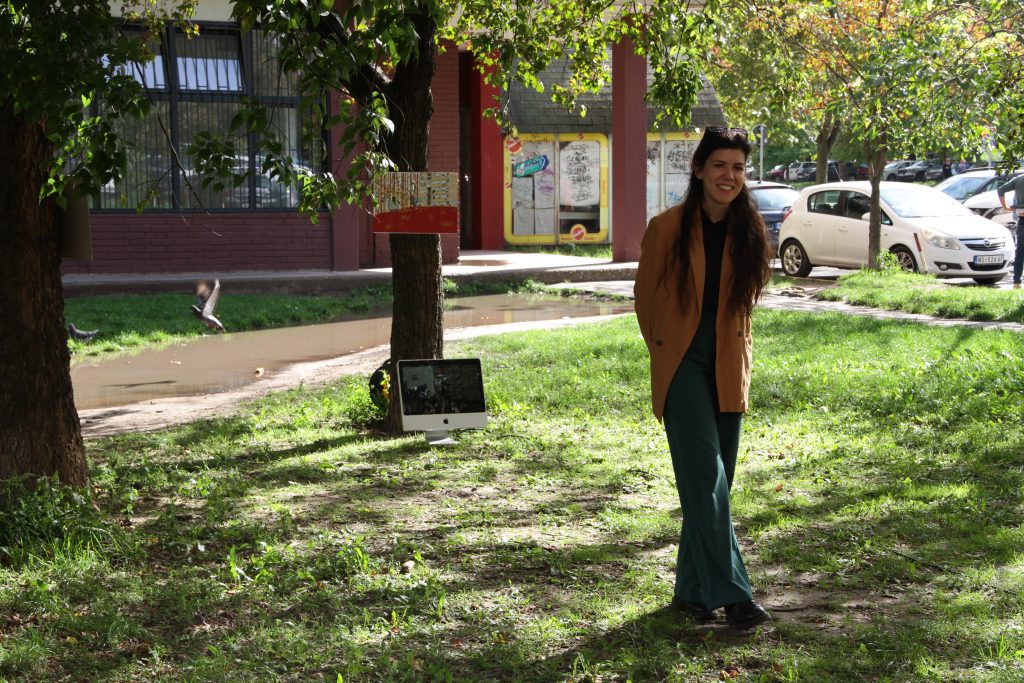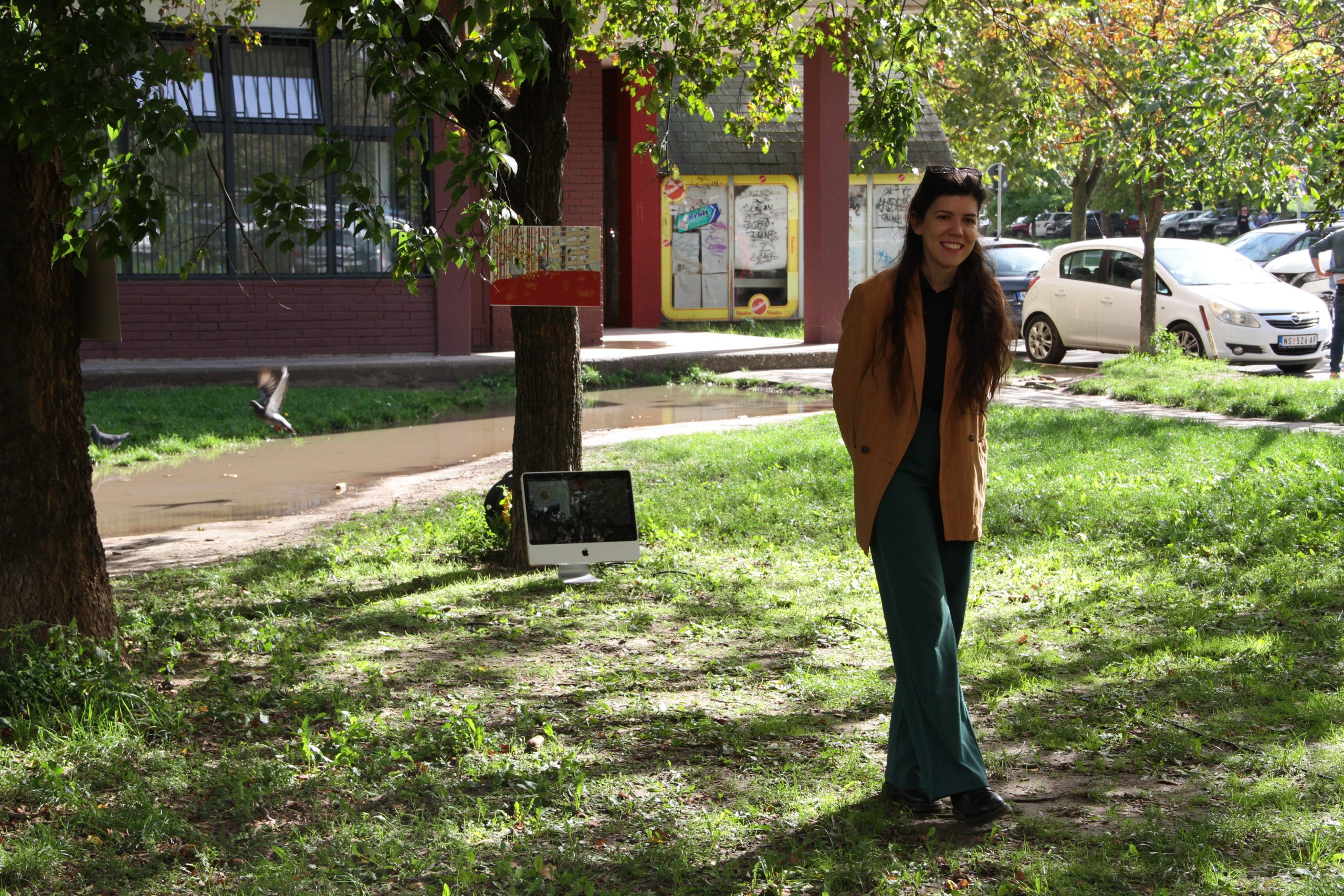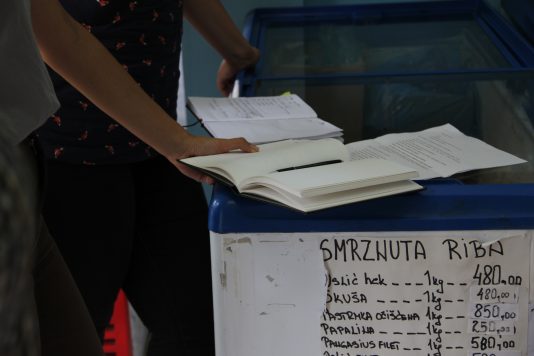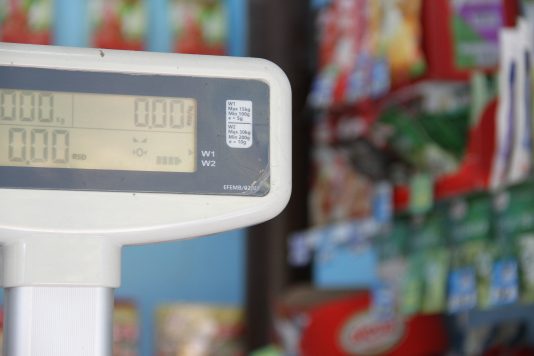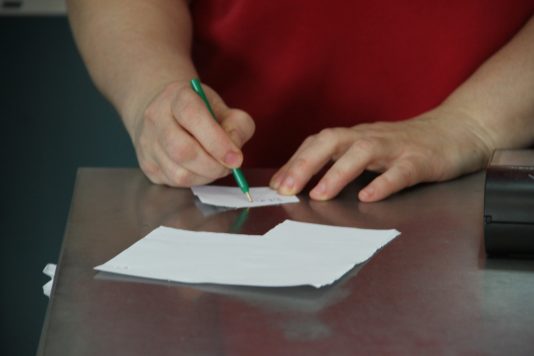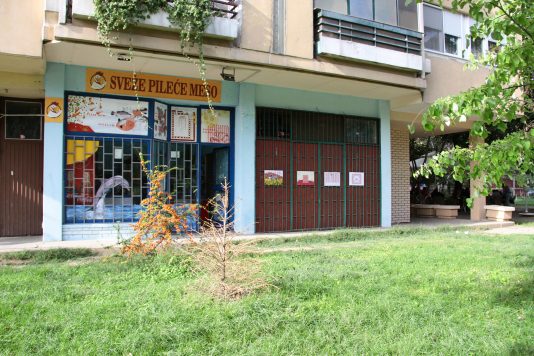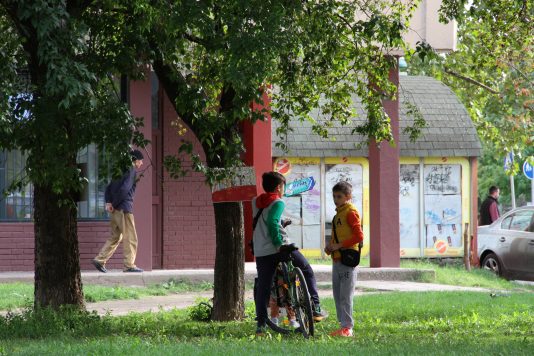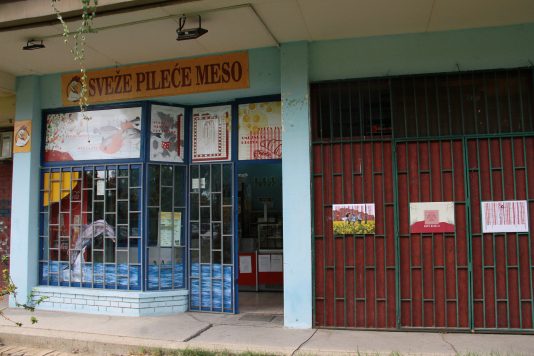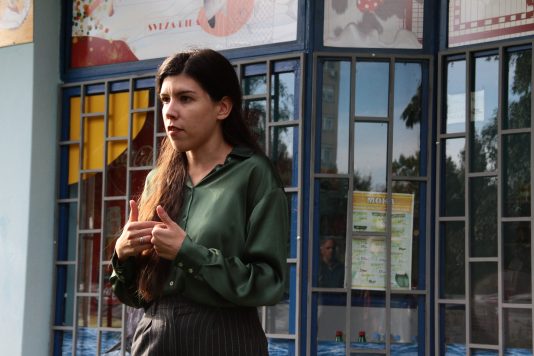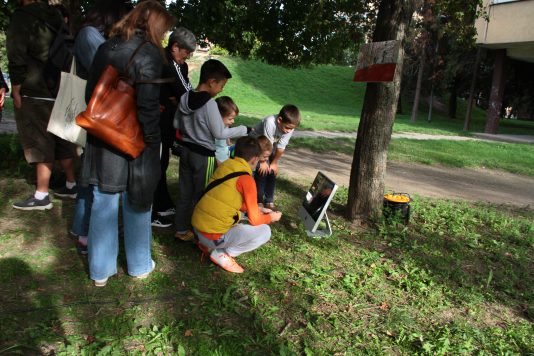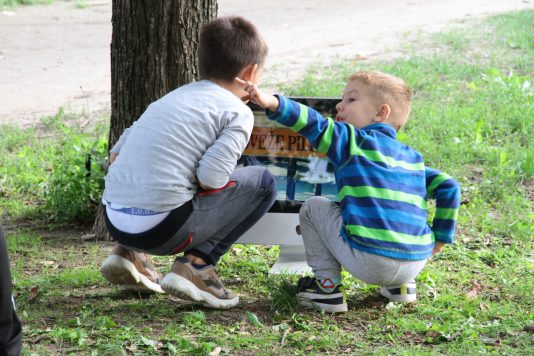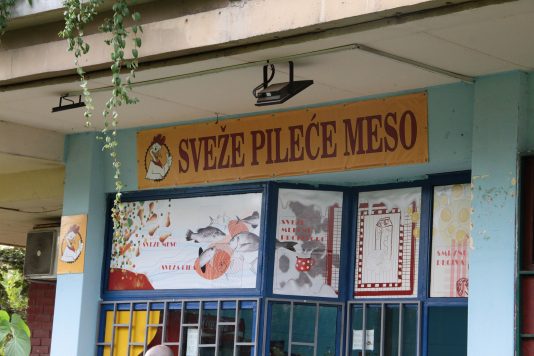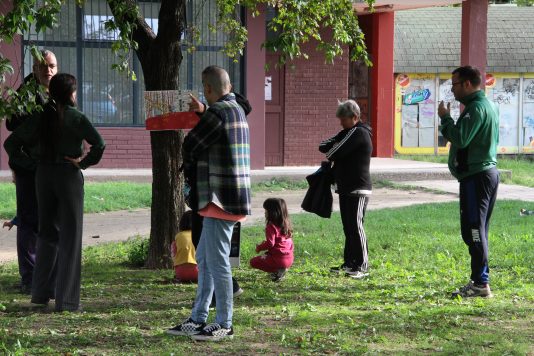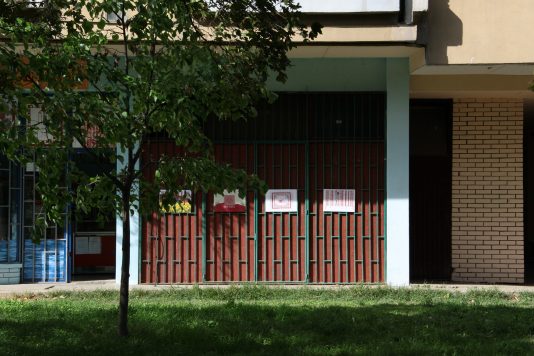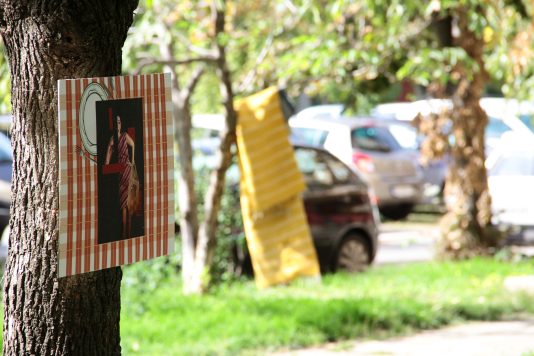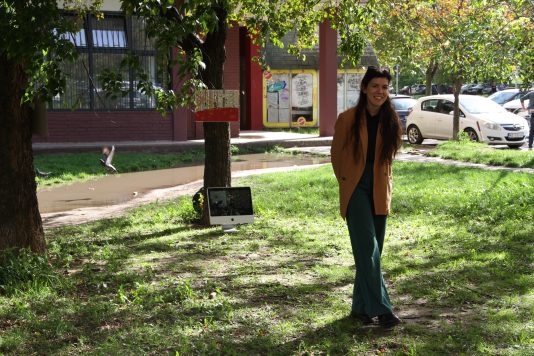Newly(uN)discovered spaces
Milica Surutka
In front of the shop window
Context and methodology
This year’s residency of the MagiC Carpets project was realized as part of the first, experimental phase of the Newly(uN)discovered spaces project, which aims to examine cultural and artistic capacities and programs in public, half-public and private spaces of Novo Naselje.
Novo Naselje is a peripheral neighborhood in Novi Sad, it was built in the 70s of the last century, as a block area with the aim of becoming a small city within the city, so that residents of Novo Naselje have everything necessary for life in the neighborhood, and that they do not need to go to the city center. Over the years, Novo Naselje has received all the necessary contents, i.e. institutions, while culture has remained neglected, and Novo Naselje, as the largest local community in Novi Sad, does not have any cultural infrastructure. Novo Kulturno Naselje was founded in 2014, precisely with this goal to launch an initiative to establish and build a cultural center in Novo Naselje. The aim of Newly(uN)discovered spaces project is to examine public, semi-public and private spaces. Both their architecture and the communities that use these spaces, but also their capacity for cultural and artistic programs, so that in the future, Novo Naselje will get its first outdoor cultural center.
The first thing we did with artists was to get to know Novo Naselje, the community, the architecture, the everyday way of life and the mutual connections between the residents. Then, considering as I said before, this year’s theme of MagiC Carpets, the residences fall under the umbrella theme of the Newly (uN)discovered spaces. We mapped 36 spaces in Novo Naselje, the spaces whose original purpose is not cultural, and investigated their purpose, spatial configuration, which communities use it, but also what those spaces could do to represent in the Cultural center and what are their potentials for cultural and artistic programs. We contacted the communities and got to know them, and during a month of daily work, we came up with topics that concern them, problems and ways to solve them. Both in the conception of works and in concrete advice that comes from knowing one’s own community.
Certainly, this experience was very important for the artists, especially since for all of them this was the first experience of working with communities and curators, close cooperation and co-creation with communities they had not previously known. The whole process helped them to understand the residents of the Novo Naselje better, what their problems and concerns are, and as we included 3 generations, we got a perspective on the community from 3 different angles. In addition, they encountered applied art and learned how to think through concepts so that their works include a current topic and in a practical sense, bring people closer and connect, which is ultimately the goal of such projects. Unite and activate communities through artistic interventions.
About “In front of the shop window”
During the first phase of the research of the space and the communities that use it, we saw a large number of small local businesses, which are family businesses and make up one large community of Novo Naselje. These jobs are generally the only source of financial income for these families.
We asked ourselves how this community lives, what they care about every day?
In the society we live in, we are used to the fact that we have to protect ourselves and that our struggle for the life we strive for means that we often do not trust others and that others wish us well. Loneliness and withdrawal into one’s comfort zone are the consequence of this narrative, and the story of community, unity, and harmony remain in the vague past written in the history of the country of Yugoslavia and in the words of our grandparents who speak of some kind of utopian oasis.
After talking with several entrepreneurs, our work focused on a small grocery store and we spent time with the owner Ceca, who runs the business, and other family members help her. We received the answer to the question, and it reads: family and neighbors.
Another question we asked is: How do they maintain their small businesses next to large hypermarkets that are located nearby and that often have big sales and lower prices than the small stores?
Every entrepreneur encounters a problem with minimal, but sometimes insufficient product sales, and they find themselves in an unfavorable position, both from the side of maintaining the business, and from the side of maintaining and supporting their families. Also, this situation certainly affects the lack of funds for business promotion and a suitable visual identity of the shop.
What are the qualities of such businesses?
In addition to the fact that at Ceca’s we can buy everything we need for our daily meals, Ceca is our neighbor with whom we can exchange thoughts, difficulties, she brightens our day with her kindness. The Delfin store also overlooks the children’s playground, and Ceca takes care of the children playing in front of her store every day, gives them sweets and water when they take a break.
Through the artistic work In front of the shop windows, Milica offered the Delfin shop a new visual identity of the shop windows and attracted the attention of new customers and with the video work, which is a combination of collage animation and everyday life of Novo Naselje, she played an authentic advertisement that moderately indicates the qualities of a small neighborhood shop, ironically using the hypermarket narrative. In addition, with the digital collages that are exhibited in the store and in front of it, in a unique way, she showed the daily life of the residents of Novo Naselje through the eyes of local entrepreneurs, inspired by Yugoslavia, as a concept that appeared as a topic in every conversation they had.
Curatorial text by Sara Dedić
